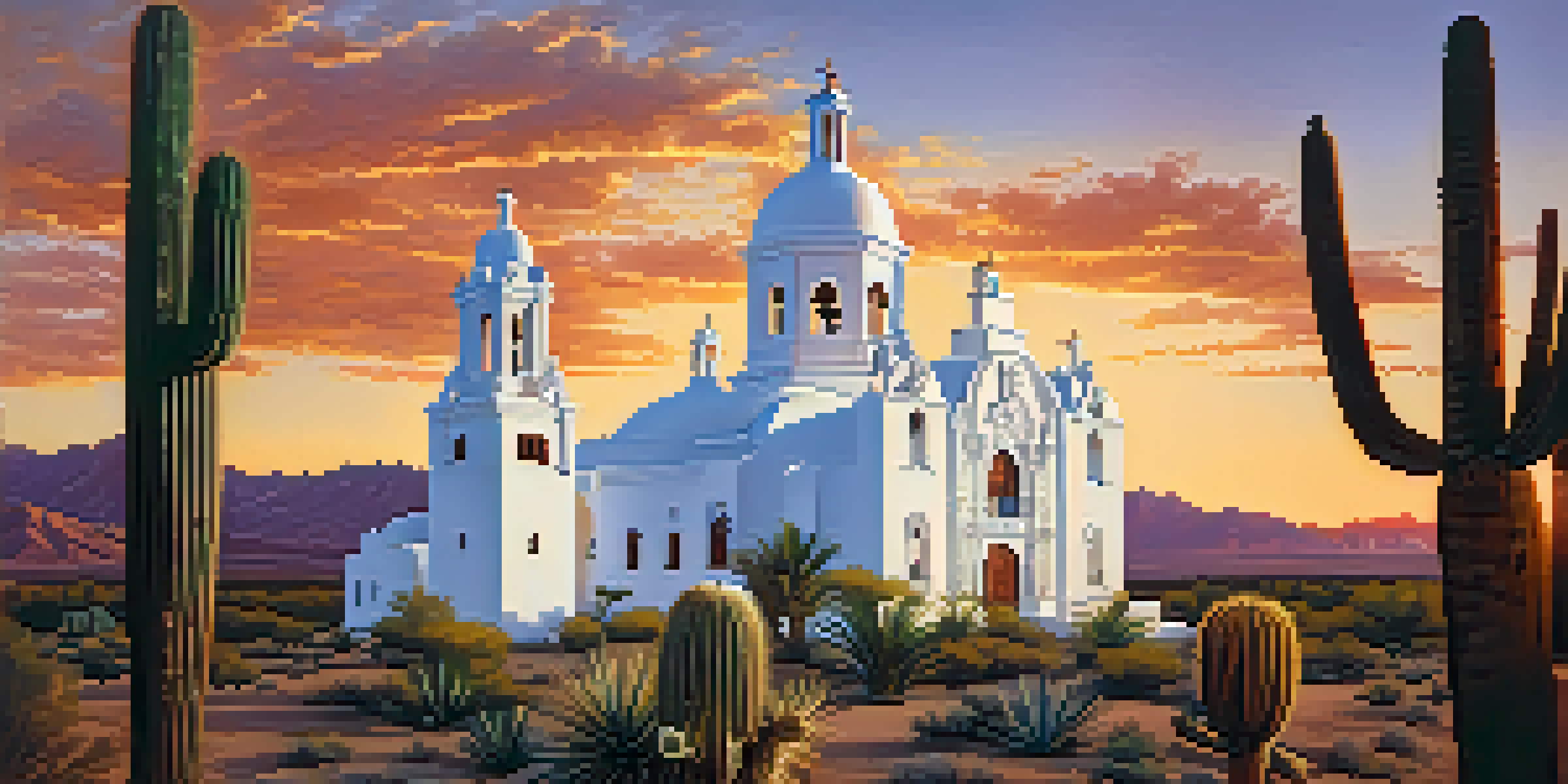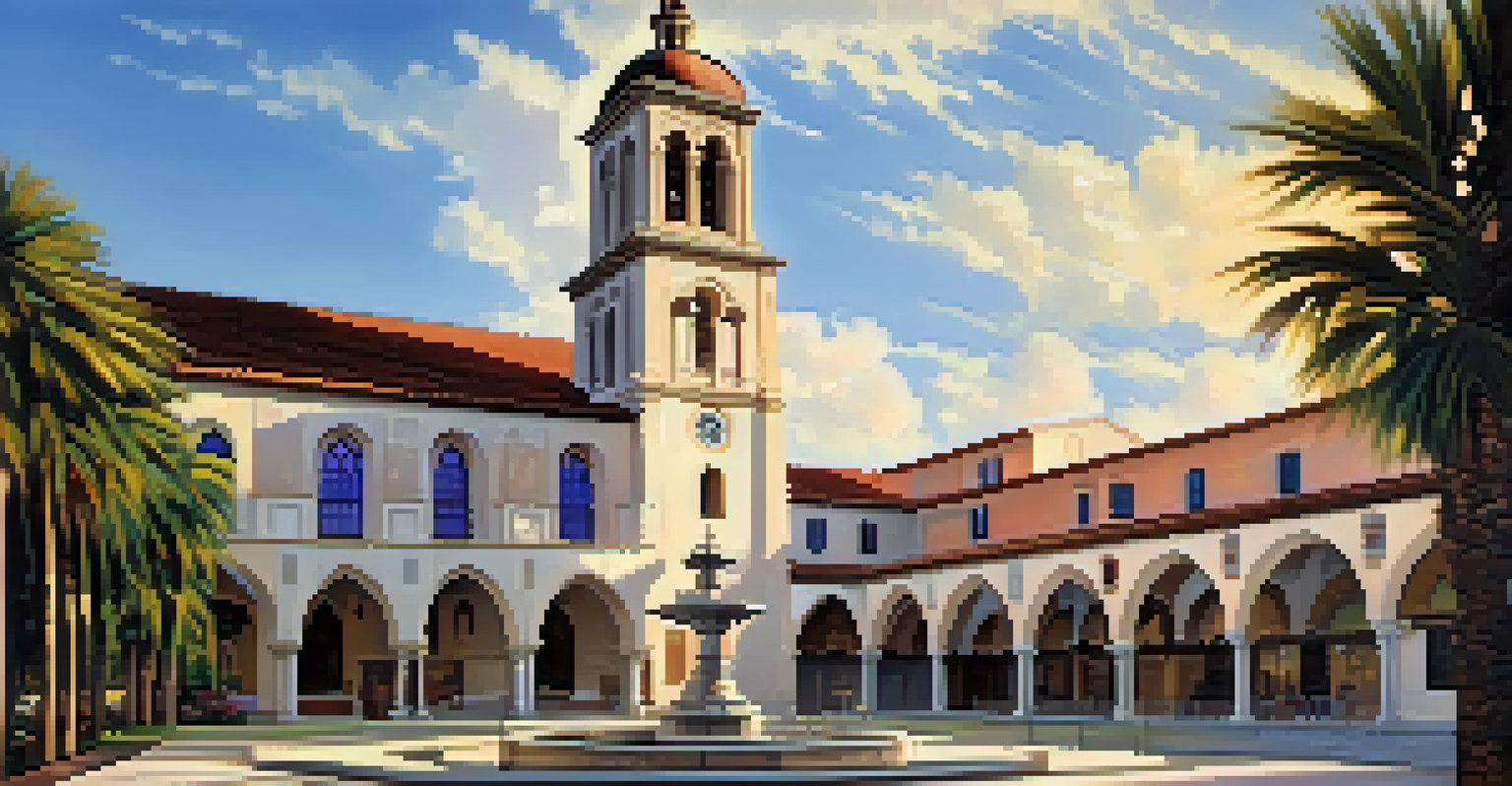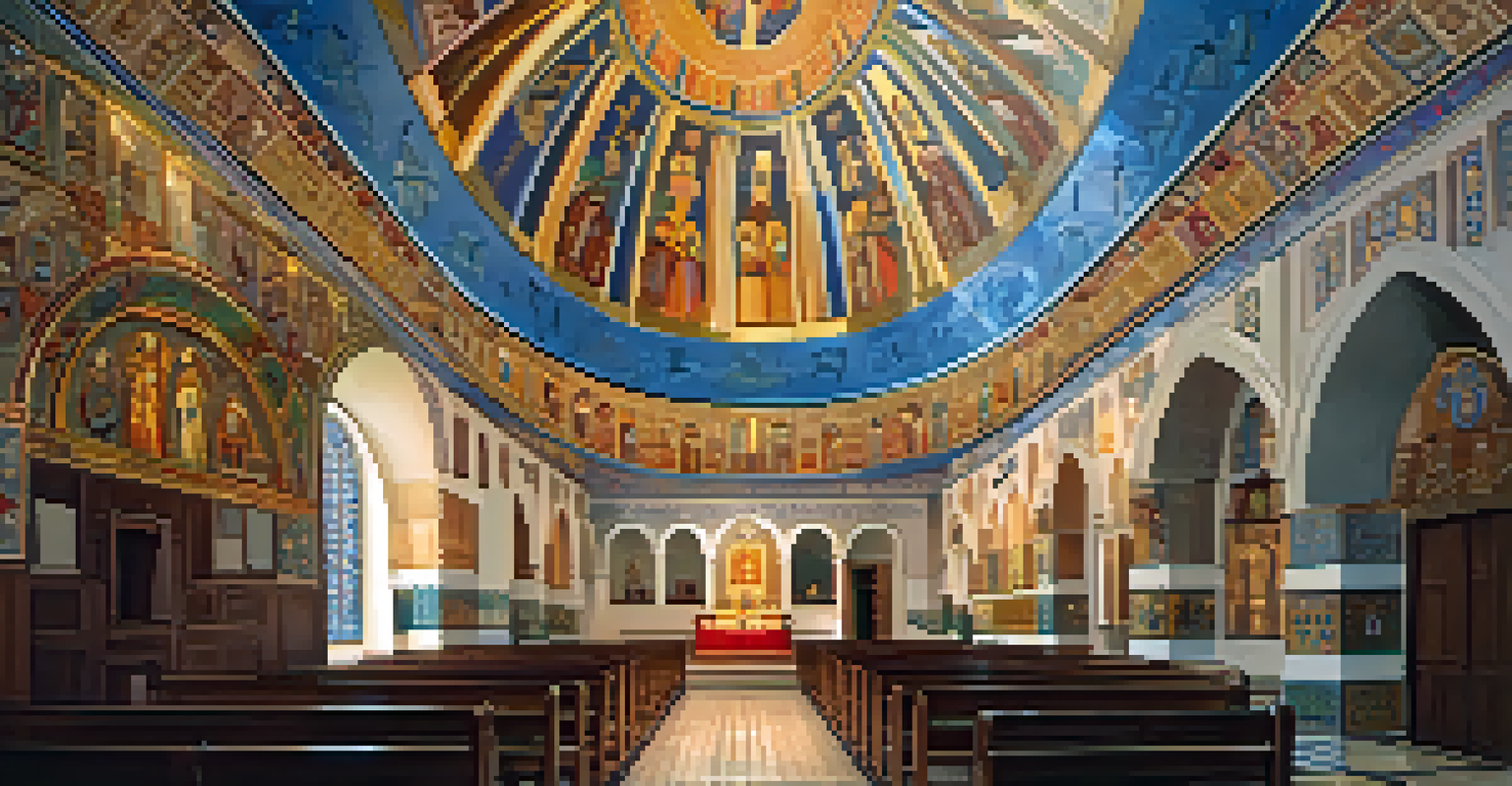Tucson's Historic Churches: Architectural Gems and Heritage

Introduction to Tucson's Architectural Heritage
Tucson is a city steeped in history, with its architectural landscape reflecting a blend of cultures and eras. Among its many treasures, the historic churches stand out as architectural gems, each telling a unique story. These churches not only serve as places of worship but also as monuments that capture Tucson's rich heritage.
Architecture is the learned game, correct and magnificent, of forms assembled in the light.
From Spanish colonial influences to modern adaptations, the churches showcase various architectural styles. They are a testament to the city’s evolution and the diverse communities that have called Tucson home. Walking through these sacred spaces offers a glimpse into the past, revealing the artistry and devotion of those who built them.
Whether you’re a history buff, an architecture enthusiast, or simply looking for a peaceful place to reflect, Tucson's historic churches have something to offer. Join us as we explore some of these magnificent structures, uncovering their significance and beauty.
San Xavier del Bac: A Jewel of Baroque Architecture
San Xavier del Bac, often referred to as the 'White Dove of the Desert,' is a stunning example of Spanish Baroque architecture. Built in the late 18th century, this mission church features intricate details, including ornate altars and beautifully painted frescoes. Its striking white façade contrasts beautifully with the surrounding desert landscape, making it a must-visit site.

The church was founded by Father Eusebio Kino, a key figure in Arizona's early history, and it has been a place of worship for over two centuries. Visitors can marvel at its remarkable craftsmanship and learn about the rich history of the Tohono O'odham Nation, who continue to maintain the mission. Guided tours often highlight the blending of Native American and Spanish cultures, offering a deeper understanding of its significance.
Tucson's Churches Reflect Rich Heritage
The historic churches of Tucson embody the city's diverse cultural and architectural history, showcasing influences from various eras and communities.
In addition to its architectural beauty, San Xavier del Bac holds regular services and events, keeping the spirit of the mission alive. Whether you're seeking spiritual solace or simply want to appreciate the artistry, this historic church is a true gem in Tucson's landscape.
The Basilica of Saint Augustine: A Testament to Faith
The Basilica of Saint Augustine stands as a monumental testament to Tucson's Catholic heritage. Established in the 18th century, this church showcases a mix of Romanesque and Renaissance architectural styles, characterized by its impressive bell tower and beautiful stained glass windows. The basilica is not only a place of worship but also a center for community events and celebrations.
Preservation is the antidote to the throwaway culture that surrounds us.
Inside, the church's grandeur is evident, with intricate murals and a serene atmosphere that invites visitors to reflect. The basilica has undergone several renovations over the years, but it has preserved its historical charm. Each corner of the church tells a story, from the beautifully crafted altar to the vibrant artwork that adorns the walls.
As one of Tucson's most beloved churches, the Basilica of Saint Augustine draws both locals and tourists. Its rich history and warm community spirit make it a perfect spot to experience the essence of Tucson's faith and culture.
Saint Demetrios Greek Orthodox Church: A Cultural Beacon
Saint Demetrios Greek Orthodox Church is a vibrant representation of Tucson’s multicultural community. Completed in the early 20th century, this church features stunning Byzantine architecture, complete with a striking dome and colorful mosaics. It's a gathering place for the local Greek community, celebrating their traditions and fostering cultural exchange.
The church's interior is adorned with beautiful iconography that tells the story of the Orthodox faith. Visitors are often captivated by the serene ambiance and the intricate details of the artwork. Regular services and cultural events provide insight into the Greek Orthodox traditions, making it a unique destination for those interested in diverse religious practices.
Community Role of Historic Churches
These churches serve as vital centers for worship and social gatherings, strengthening community ties and promoting cultural exchange.
Saint Demetrios not only serves its congregation but also invites everyone to appreciate its beauty and significance. Whether you're attending a service or participating in a community event, this church offers a welcoming atmosphere filled with rich cultural heritage.
The Historic First United Methodist Church: A Community Hub
First United Methodist Church has been a cornerstone of Tucson's faith community since the late 19th century. Its beautiful Gothic Revival architecture features stunning stained glass windows and a majestic tower that can be seen from afar. This church serves as a gathering place for worship, community service, and social events.
Inside, the warm and inviting atmosphere encourages fellowship among members and visitors alike. The church's programs cater to a diverse congregation, offering everything from youth ministries to community outreach initiatives. It's a place where faith and community intersect, fostering a sense of belonging for all.
As one of the oldest churches in Tucson, First United Methodist Church has a rich history that reflects the city’s growth. Attending a service or event here provides a glimpse into the vibrant life of this long-standing community hub.
The Role of Historic Churches in Tucson's Community
Historic churches in Tucson play a vital role in the community, serving as both places of worship and centers for social gathering. They often host events, fundraisers, and outreach programs that benefit the local population. This dual role helps to strengthen community ties and foster a spirit of togetherness among residents.
Moreover, these churches are key players in preserving Tucson's rich cultural heritage. Many offer tours and educational programs that highlight their historical significance, allowing visitors to connect with the city's past. This engagement fosters appreciation for the architectural beauty and the stories behind each structure.
Preservation Efforts Sustain History
Ongoing restoration initiatives ensure Tucson's historic churches remain vibrant symbols of the city's architectural beauty and cultural legacy.
Through their outreach and community involvement, Tucson's historic churches contribute to the social fabric of the city. They not only provide spiritual guidance but also serve as beacons of hope and resilience for those in need.
Preservation Efforts: Keeping History Alive
Preserving Tucson's historic churches is crucial for maintaining the city's architectural and cultural heritage. Various organizations and local communities work diligently to restore and maintain these structures, ensuring they remain vibrant parts of the city's landscape. These efforts are often supported by grants, donations, and community fundraising events.
Restoration projects not only focus on the physical aspects of the churches but also on keeping their history and significance alive. Workshops, educational programs, and tours are organized to engage the community, helping them understand the importance of these historic sites. This hands-on approach encourages a sense of ownership and pride among residents.

As Tucson continues to grow and change, the preservation of its historic churches remains vital. These buildings are more than just architectural landmarks; they are living testaments to the city’s rich history and the communities that have shaped it.
Conclusion: Embracing Tucson's Heritage Through Its Churches
Tucson's historic churches are more than just beautiful buildings; they are integral parts of the city's heritage and identity. Each church tells a story, reflecting the diverse cultures and traditions that have flourished in the area. By exploring these architectural gems, visitors gain insight into Tucson's history and the values that continue to shape its community.
Whether you are drawn to their stunning designs, rich histories, or the vibrant communities they serve, Tucson's historic churches offer a unique window into the past. They remind us of the importance of faith, community, and cultural preservation in an ever-changing world.
As you wander through Tucson and visit these sacred spaces, take a moment to appreciate not just their beauty but also the legacy they represent. Embracing this heritage enriches our understanding of Tucson and fosters a deeper connection to its people and stories.